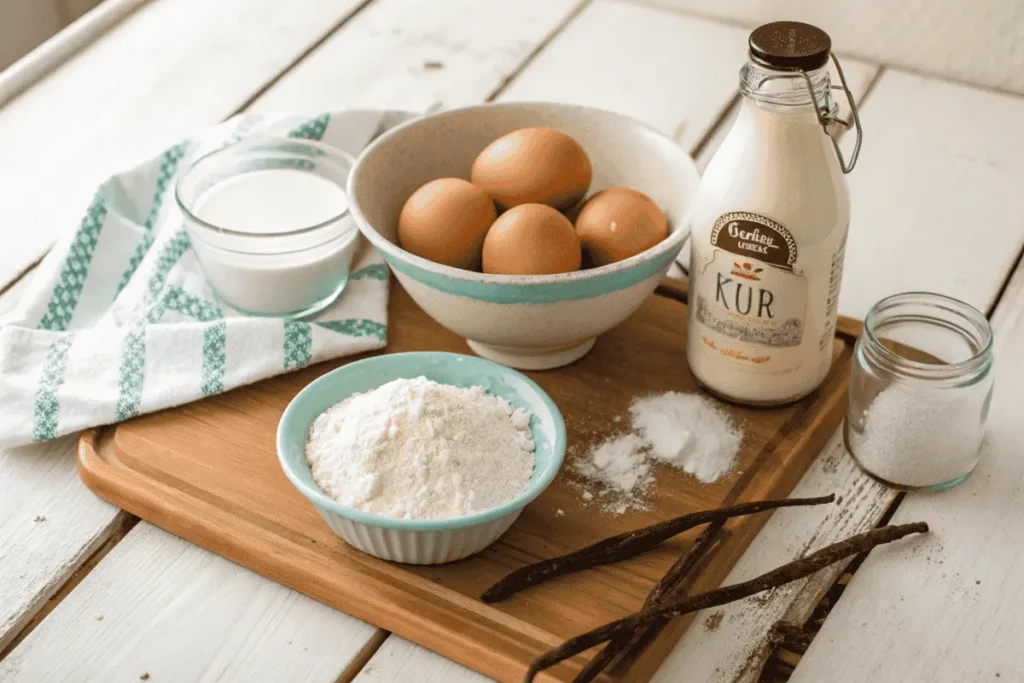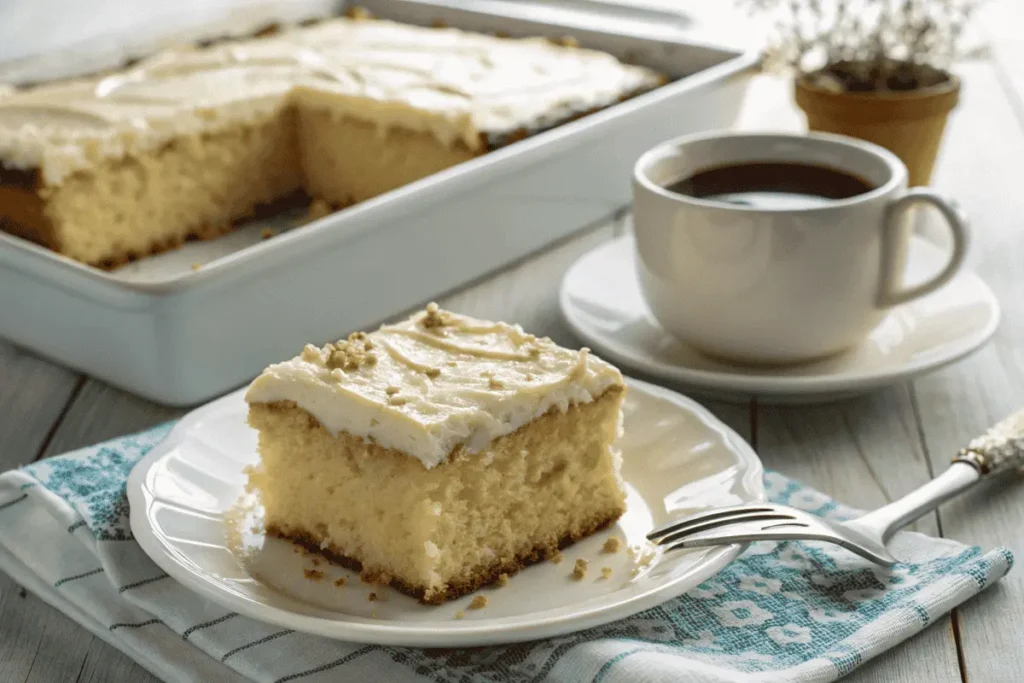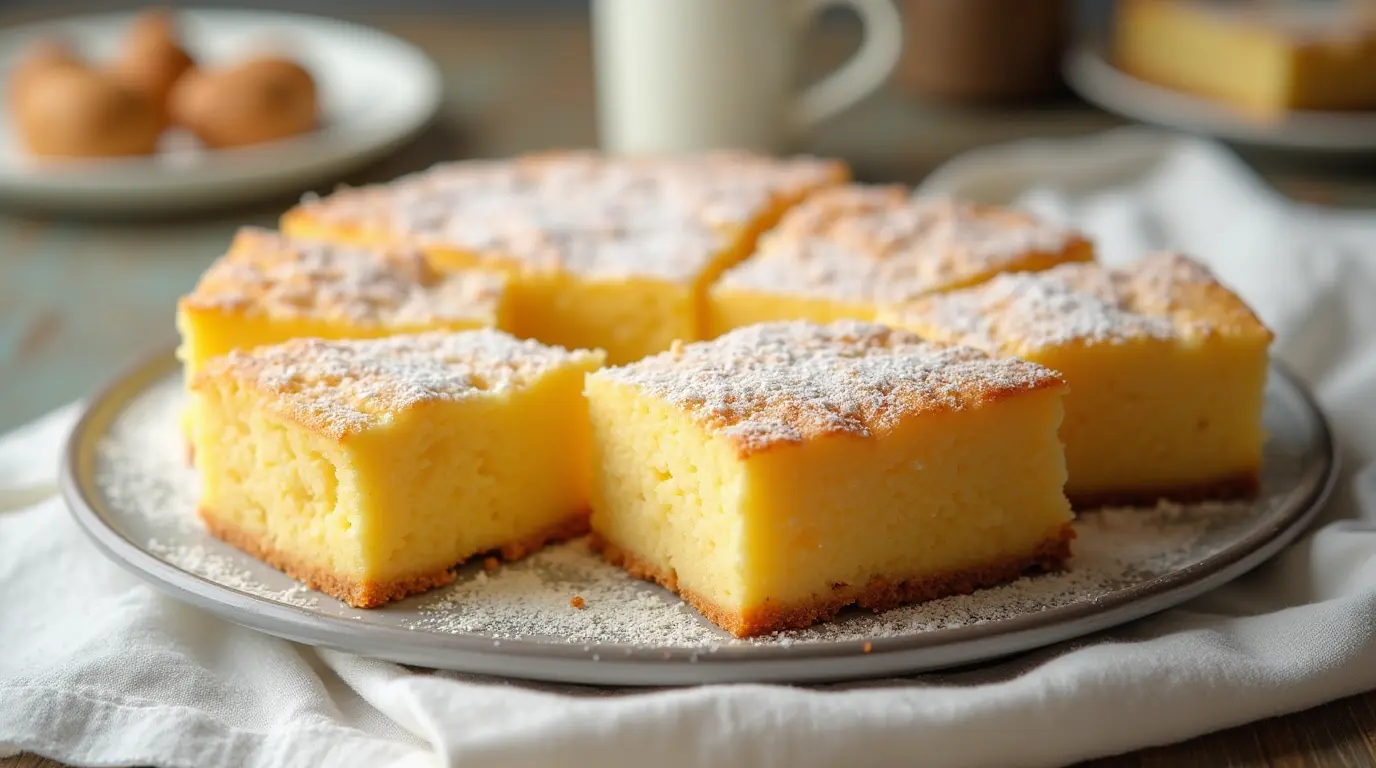Who doesn’t love the sweet simplicity of a well-made sheet cake? Now, imagine that cake infused with the tangy magic of kefir. This article is your ultimate guide to creating the perfect Kefir Sheet Cake Recipe Card, loaded with tips, tricks, and creative ideas. From understanding why kefir is a game-changer in baking to exploring step-by-step instructions and creative variations, this guide has it all. Ready to whip up a dessert that’s as delicious as it is easy? Let’s dive in!
What Is a Kefir Sheet Cake?
A kefir sheet cake is a light, moist dessert made using kefir—a fermented dairy product similar to buttermilk or yogurt. This cake’s hallmark is its soft, tender crumb and a slight tanginess that makes it uniquely delicious. Whether it’s for a family gathering, potluck, or simply a sweet treat for yourself, this cake is a winner.
Why Use Kefir in Baking?
Why kefir? The real question is: why not? Thanks to its acidity, kefir activates baking soda or baking powder, making your cake rise beautifully. Plus, its creamy texture ensures your cake stays moist without being dense. As a bonus, kefir’s natural probiotics add a healthful twist to your dessert.
The Popularity of Kefir Cakes Around the World
From the Czech Kefírová buchta to modern spins on American sheet cakes, kefir-based desserts have a rich history. Bakers love them for their simplicity and versatility. You can dress them up with decadent toppings or keep things rustic for a homey vibe. No matter how you slice it, this cake’s popularity is soaring.
Benefits of Baking with Kefir
Kefir’s Nutritional Profile
Kefir isn’t just a baking secret; it’s a nutritional powerhouse. Packed with probiotics, calcium, and protein, it offers health benefits that go beyond the kitchen. Unlike buttermilk, kefir provides live cultures that support gut health, making your Kefir Sheet Cake Recipe Card not only a dessert but also a feel-good treat.
Health Benefits of Using Kefir in Desserts
Incorporating kefir into your desserts is a simple way to make them slightly healthier. Its probiotics can aid digestion, while its lower fat content compared to heavy cream or butter helps reduce overall calorie intake. Plus, kefir is a fantastic alternative for those looking for lactose-friendly options, as its fermentation process breaks down much of the lactose.
How Kefir Improves Cake Texture and Flavor
Kefir works wonders in baking by adding moisture and a subtle tanginess to cakes. It tenderizes the crumb and enhances flavors, giving your cake that perfect balance of sweetness and richness. These qualities make it a star ingredient in any Kefir Sheet Cake Recipe Card. For more on how fermentation elevates recipes, explore the Kefir Chocolate Cake Recipe Card for inspiration.
Essential Ingredients for a Kefir Sheet Cake

Overview of Key Ingredients
Creating the perfect Kefir Sheet Cake Recipe Card starts with simple, pantry-friendly ingredients. Flour, sugar, eggs, and a splash of vanilla provide the base, while kefir takes center stage as the standout ingredient. Add baking soda or powder, and your cake rises to airy perfection.
Choosing the Right Type of Kefir
Not all kefir is created equal! For baking, plain, unsweetened kefir works best to avoid altering your cake’s sweetness. If you want to experiment, flavored kefirs like vanilla or lemon can add unique twists. For tips on substitutions, check out this guide on how to modify cake recipes.
Flavor Enhancers for Kefir Cakes (Vanilla, Citrus, etc.)
Simple tweaks can elevate your cake from delicious to divine. A touch of vanilla extract amplifies the natural tang of kefir, while zesty lemon or orange adds brightness. Chocolate chips or a dash of cinnamon can also transform your cake into a rich, comforting dessert.
Step-by-Step Recipe for Kefir Sheet Cake
Preparing Your Baking Tools and Ingredients
Before you begin, gather everything you need for your Kefir Sheet Cake Recipe Card. Preheat your oven to 350°F (175°C) and grease a large sheet pan with butter or line it with parchment paper for easy cleanup. Make sure your mixing bowls, spatula, and whisk are within reach. As for ingredients, measure out all-purpose flour, sugar, kefir, eggs, vegetable oil, vanilla extract, baking soda, and salt. Proper preparation sets the stage for a stress-free baking experience.
Mixing the Batter: Techniques for Perfect Texture
The secret to a perfectly tender cake lies in how you mix the batter. Start by whisking together the wet ingredients—kefir, eggs, oil, and vanilla—in a large bowl until smooth. In a separate bowl, combine the dry ingredients: flour, sugar, baking soda, and a pinch of salt. Gradually add the dry mix to the wet ingredients, stirring just until combined. Be careful not to overmix, as this can make the cake dense. The batter should be smooth but slightly thick, with no lumps.
Baking Tips: Timing and Temperature Guidelines
Pour the batter evenly into the prepared sheet pan, smoothing the surface with a spatula. Bake in the preheated oven for 25–30 minutes or until a toothpick inserted into the center comes out clean. For an even bake, rotate the pan halfway through. Once done, let the cake cool completely on a wire rack before adding any toppings. For another take on sheet cakes, check out Healthy Cinnamon Rolls for inspiration.
Creative Variations on the Classic Recipe
Chocolate Kefir Sheet Cake
For chocolate lovers, a simple tweak can transform your Kefir Sheet Cake Recipe Card into a rich, indulgent dessert. Add ½ cup of unsweetened cocoa powder to the dry ingredients, and swap out some of the sugar for brown sugar to deepen the flavor. Top with a glossy chocolate glaze for a decadent finish.
Lemon and Blueberry Kefir Cake
Bright and zesty, this variation is perfect for spring and summer gatherings. Fold in 1 cup of fresh blueberries and the zest of one lemon into the batter before baking. A drizzle of lemon glaze made with powdered sugar and lemon juice adds an extra pop of flavor. For more fruity dessert ideas, check out the Peach Cobbler Recipe.
Gluten-Free and Dairy-Free Kefir Cake Options
Looking for alternatives? Substitute the all-purpose flour with a gluten-free baking blend to cater to dietary restrictions. For a dairy-free option, opt for coconut or almond-based kefir. These tweaks ensure everyone can enjoy this delicious dessert.
How to Decorate and Serve Your Kefir Cake

Classic Toppings for Kefir Cakes
Once your Kefir Sheet Cake Recipe Card creation is cooled and ready, it’s time to elevate its appearance and flavor with some classic toppings. A simple dusting of powdered sugar can add a touch of elegance and sweetness. For something richer, whip up a cream cheese frosting or spread a layer of homemade buttercream. Chocolate ganache is another fantastic choice, adding a glossy finish and a decadent bite.
Seasonal and Special Occasion Decorating Ideas
If you’re baking for a holiday or celebration, tailor your toppings to the occasion. In spring, garnish your cake with edible flowers or fresh berries for a vibrant look. For a wintery touch, sprinkle shredded coconut and white chocolate curls to mimic snow. A drizzle of caramel sauce with toasted nuts is perfect for autumn-inspired bakes. The Kefir Sheet Cake Recipe Card lends itself beautifully to any creative decoration you can imagine.
Serving Suggestions and Pairing Ideas
To serve, slice your sheet cake into even squares or rectangles. Pair it with a hot cup of coffee, a cold glass of milk, or a scoop of vanilla ice cream for an indulgent treat. Whether it’s a family dinner or a party with friends, this versatile dessert is guaranteed to impress. For more serving ideas, explore recipes like French Toast Bagels.
FAQs About Kefir Sheet Cakes
Can I Substitute Kefir with Buttermilk?
Absolutely! If you don’t have kefir on hand, buttermilk works as a great substitute in your Kefir Sheet Cake Recipe Card. Both ingredients provide the acidity needed for a tender, fluffy cake, though kefir adds a slightly tangier flavor.
How Do I Store a Kefir Sheet Cake?
To keep your cake fresh, store it in an airtight container at room temperature for up to 3 days. For longer storage, refrigerate it for up to a week or freeze individual slices for a convenient, grab-and-go dessert.
What Are Some Common Mistakes to Avoid?
One common mistake is overmixing the batter, which can make the cake dense and tough. Also, be sure to use fresh baking soda or powder to ensure a proper rise. Finally, avoid baking the cake too long, as this can dry it out.
Tips for Perfecting Your Kefir Sheet Cake Recipe Card
Common Pitfalls to Avoid
While the Kefir Sheet Cake Recipe Card is straightforward, there are a few potential missteps to watch out for. One of the most common is using expired baking soda or powder, which can cause your cake to fall flat. Always check the freshness of these ingredients before starting. Additionally, avoid overmixing the batter; it can lead to a dense cake instead of the soft, fluffy texture you’re aiming for. Lastly, resist the urge to open the oven door frequently while the cake is baking, as this can lead to uneven baking.
Pro Tips for Success
To take your cake to the next level, here are some insider tips:
- Let all your ingredients come to room temperature before mixing. This helps the batter blend more smoothly and ensures even baking.
- Don’t skip greasing your sheet pan thoroughly, as it guarantees the cake will release easily.
- For a richer flavor, try browning the butter used in your frosting or glaze.
With these tips in mind, your Kefir Sheet Cake Recipe Card will be foolproof and crowd-pleasing every time.
Why the Kefir Sheet Cake Recipe Card Is a Must-Try
A Recipe That Combines Tradition and Modern Taste
The Kefir Sheet Cake Recipe Card bridges the gap between traditional baking methods and modern flavor profiles. Its roots can be traced back to classic European baking, where fermented dairy was a staple ingredient. Today, kefir adds a tangy, probiotic twist that modern bakers love, making this cake both nostalgic and innovative.
A Dessert for Every Occasion
One of the best things about this recipe is its versatility. Whether you’re baking for a family dinner, a potluck, or a holiday gathering, the Kefir Sheet Cake Recipe Card fits the bill. It’s simple enough for beginners yet adaptable for experienced bakers who want to add their own creative touch.
Final Thoughts
If you’re looking for a dessert that’s easy to make, delicious, and healthier than most traditional cakes, this recipe is a must-try. It combines wholesome ingredients with a tender, tangy flavor that’s sure to impress your guests. Give it a shot—you might just discover your new favorite cake recipe!

